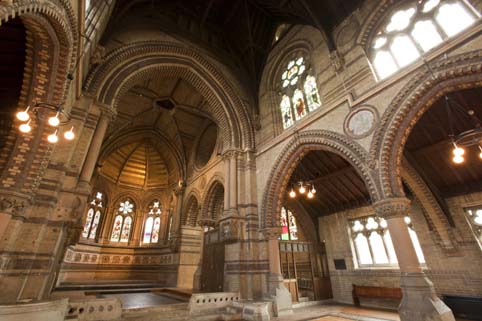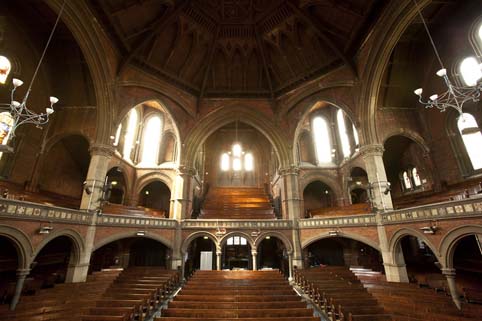New SAVE Report: London's Churches are Fighting Back
December 2011
A new report by SAVE Britain’s Heritage shines a spotlight on London’s places of worship, identifying those churches most at risk from decay and neglect, celebrating successful rescues, and looking to the challenges ahead. The report features stunning new photography.
London’s Churches are Fighting Back features 30 case studies, including 19 important churches at risk. These include the Victorian ‘tin tabernacles’ of Hackney and Kilburn (one of which was recently for sale on eBay, but remains vacant); the Middlesex Hospital Chapel, Westminster, currently marooned at the centre of a huge cleared redevelopment site; and St Saviour’s in Poplar, a forlorn shell after suffering a fire in 2007. (For further examples & images, see full press release - link below).
As cuts in public spending continue to bite, London’s churches face enormous challenges over the next decade. But this report also provides a celebration of recent success stories and much-needed hope for the future. In 1985 SAVE published the devastating report London’s Churches are Falling Down. 30 years on, only one of the featured buildings in that landmark publication remains at risk - a remarkable reversal of fortunes. This latest report revisits these once crumbling Goliaths and tells the story of their rescue against all the odds, recounting how they have found new congregations or new uses, brought back to life by much-needed grants.
Marcus Binney, SAVE’s President, says ‘As a result of energetic clergy and loyal congregations, as well as sustained campaigning by SAVE and other heritage organisations such as the Victorian Society - and increasingly English Heritage itself -the number of churches being closed or demolished has sharply declined.’
‘Successive predictions of mass closures of churches in London have so far proved unfounded. In 2010 just three schemes for redundancy were approved in the Diocese of London, two to other Christian congregations, and one for partial closure.’
‘One of the most heartening examples is the Union Chapel in Islington, built to seat 1,650 and threatened with demolition. Thanks to imaginative and determined effort by enthusiastic locals who formed the Friends of Union Chapel in 1982, the chapel has remained open as a working church, an award-winning events venue and a centre for those who are homeless or in crisis.’
‘Another longstanding case, St Stephen’s Rosslyn Hill, has been rescued from terminal decay and repaired with the help of major grants. It is now open to the public on regular open days and used for community events.’
‘With costs of maintenance rising and thefts (especially of lead from church roofs) on the increase, these buildings face a difficult decade, but this report shows London’s churches survived the recession of the early 1990s and with continued determination and resourcefulness can survive the hard years ahead.’
SAVE has long been at the forefront of the battle to protect historic churches from demolition and needless closure. In 1977 SAVE published its first catalogue of Churches at Risk to coincide with the exhibition Change and Decay at the Victoria & Albert Museum, curated by two SAVE founders, Peter Burman and Marcus Binney. The exhibition toured the country for three years. Since then SAVE has published a clutch of further reports focusing on endangered places of worship, from Nonconformist chapels in the north of England to the great Regency and Victorian churches of Brighton.




